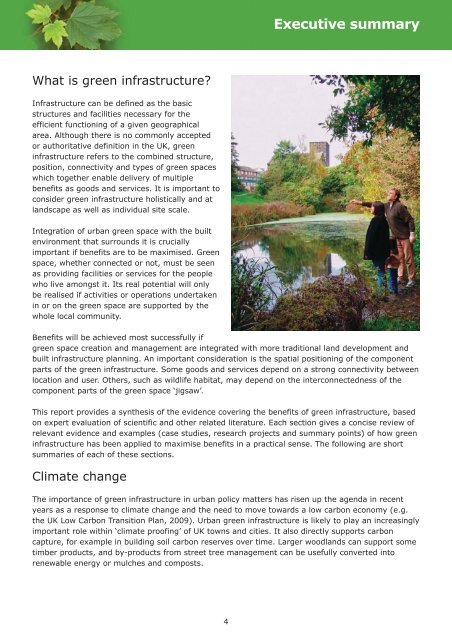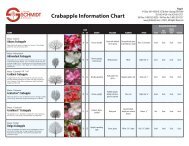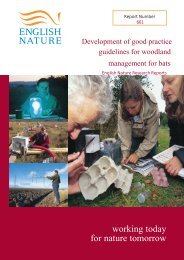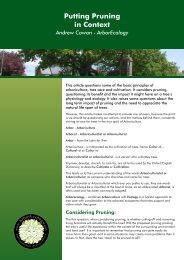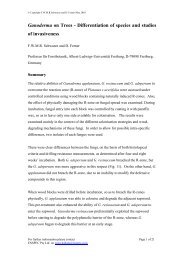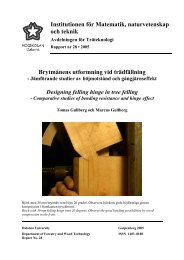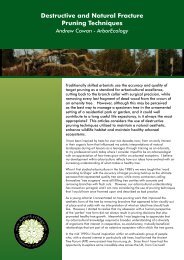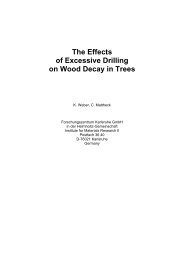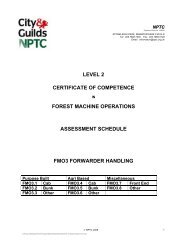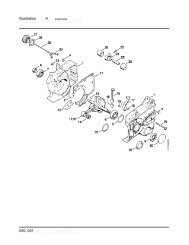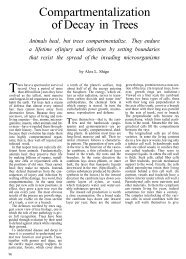Executive summaryWhat is <strong>green</strong> <strong>infrastructure</strong>?Infrastructure can be defined as the basicstructures and facilities necessary for theefficient functioning <strong>of</strong> a given geographicalarea. Although there is no commonly acceptedor authoritative definition in the UK, <strong>green</strong><strong>infrastructure</strong> refers to the combined structure,position, connectivity and types <strong>of</strong> <strong>green</strong> spaceswhich together enable delivery <strong>of</strong> multiplebenefits as goods and services. It is important toconsider <strong>green</strong> <strong>infrastructure</strong> holistically and atlandscape as well as individual site scale.Integration <strong>of</strong> urban <strong>green</strong> space with the builtenvironment that surrounds it is cruciallyimportant if benefits are to be maximised. Greenspace, whether connected or not, must be seenas providing facilities or services for the peoplewho live amongst it. Its real potential will onlybe realised if activities or operations undertakenin or on the <strong>green</strong> space are supported by thewhole local community.<strong>Benefits</strong> will be achieved most successfully if<strong>green</strong> space creation and management are integrated with more traditional land development andbuilt <strong>infrastructure</strong> planning. An important consideration is the spatial positioning <strong>of</strong> the componentparts <strong>of</strong> the <strong>green</strong> <strong>infrastructure</strong>. Some goods and services depend on a strong connectivity betweenlocation and user. Others, such as wildlife habitat, may depend on the interconnectedness <strong>of</strong> thecomponent parts <strong>of</strong> the <strong>green</strong> space ‘jigsaw’.This report provides a synthesis <strong>of</strong> the evidence covering the benefits <strong>of</strong> <strong>green</strong> <strong>infrastructure</strong>, basedon expert evaluation <strong>of</strong> scientific and other related literature. Each section gives a concise review <strong>of</strong>relevant evidence and examples (case studies, research projects and summary points) <strong>of</strong> how <strong>green</strong><strong>infrastructure</strong> has been applied to maximise benefits in a practical sense. The following are shortsummaries <strong>of</strong> each <strong>of</strong> these sections.Climate changeThe importance <strong>of</strong> <strong>green</strong> <strong>infrastructure</strong> in urban policy matters has risen up the agenda in recentyears as a response to climate change and the need to move towards a low carbon economy (e.g.the UK Low Carbon Transition Plan, 2009). Urban <strong>green</strong> <strong>infrastructure</strong> is likely to play an increasinglyimportant role within ‘climate pro<strong>of</strong>ing’ <strong>of</strong> UK towns and cities. It also directly supports carboncapture, for example in building soil carbon reserves over time. Larger woodlands can support sometimber products, and by-products from street tree management can be usefully converted intorenewable energy or mulches and composts.4
Executive summaryGreen <strong>infrastructure</strong> has an important role in supporting the adaptation <strong>of</strong> people who live in townsand cities to a changing climate. Depending on location, type and extent, it provides shade, coolingand wind interception and an insulation role in the winter. Green <strong>infrastructure</strong> can also potentiallymitigate risks from climate change-induced reductions in air and water quality; and it can provide abuffer for habitats and species, whilst contributing to attainment <strong>of</strong> sustainable urban drainage andcontrolling upstream water flows to reduce flood risk. Effectively harnessed, <strong>green</strong> <strong>infrastructure</strong> hasreal potential for informing people about climate change. Green spaces can also be used to promotean appreciation <strong>of</strong> the impacts <strong>of</strong> climate change and lifestyle changes needed to reduce furthereffects and/or to adapt to them.Climate change will certainly affect the performance and delivery <strong>of</strong> <strong>green</strong> <strong>infrastructure</strong> in urbanareas. At a technical level, choice <strong>of</strong> vegetation and species, provision <strong>of</strong> adequate contaminationmanagement, and soil and form <strong>of</strong> land management will all need to be factored into the planning <strong>of</strong>new <strong>green</strong> <strong>infrastructure</strong>. A changing climate and a need to reduce carbon footprints also provide anopportunity to reconsider <strong>green</strong> <strong>infrastructure</strong>, and the outcomes expected from it in the years tocome. An informed position, based on a synthesis <strong>of</strong> the evidence for a range <strong>of</strong> important potentialbenefits, should allow policy makers, planners and land owners to make complex decisions about<strong>green</strong> <strong>infrastructure</strong> more effectively.Health and well-beingGood quality, accessible <strong>green</strong> space and <strong>infrastructure</strong> can provide many potential health and wellbeingbenefits. The most significant <strong>of</strong> these can be grouped into three broad categories: (1)increased life expectancy and reduced health inequality; (2) improvements in levels <strong>of</strong> physicalactivity and health; (3) promotion <strong>of</strong> psychological health and mental well-being. Associations havebeen found between access to <strong>green</strong> space and raised levels <strong>of</strong> physical activity, which in turnimproves individuals’ health. Green space can also have a beneficial impact on mental well-beingand cognitive function. The evidence strongly suggests that, at their best, <strong>green</strong> spaces can helpreduce health inequalities and that both the improvement <strong>of</strong> existing, and creation <strong>of</strong> new, <strong>green</strong><strong>infrastructure</strong> should be prioritised, especially in areas <strong>of</strong> greatest need.Economic growth and investmentPlacing accurate economic values on <strong>green</strong> <strong>infrastructure</strong> or its <strong>green</strong> space components is vital tosupport the case for sustained investment. Examples <strong>of</strong> case studies where economic valuation hastaken place are outlined to demonstrate the net economic value <strong>of</strong> initiatives to create or improve<strong>green</strong> <strong>infrastructure</strong>. There is good evidence that <strong>green</strong> space can make positive impacts on localeconomic regeneration, especially for job creation, business start up, increased land values andinward investment. However, the quality and quantity <strong>of</strong> this evidence is comparatively poor andfurther case studies are needed to improve it.5


